Cairo
THE CITY OF A THOUSAND MINARETS
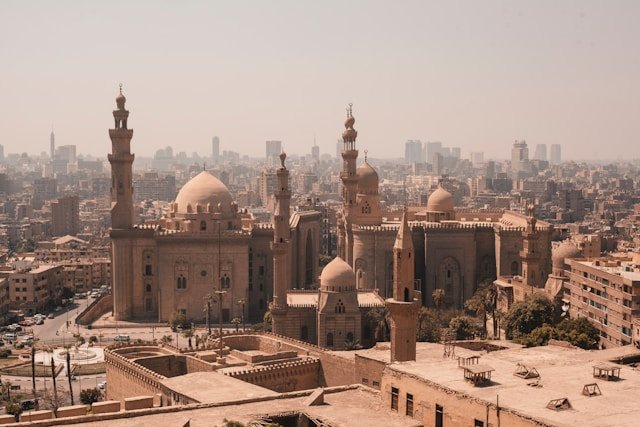
It helps keep this site running, and we appreciate your support!
Sightseeing
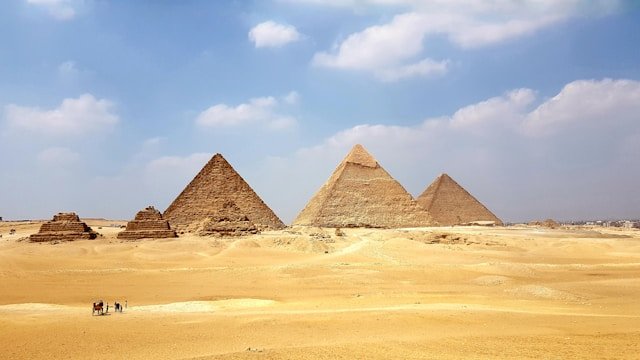
Giza Pyramids
Perched on Cairo’s western fringe, the Giza Pyramids are a jaw-dropping trio—the Great Pyramid of Khufu, soaring 146 meters, anchors this 4,500-year-old complex, the last standing Wonder of the Ancient World ($10 entry covers all three). Built as royal tombs, they’re flanked by smaller pyramids and the chaos of modern Giza—camel handlers offer $5 rides, their beasts grunting under the sun, while hawkers push $2 papyrus replicas. Sunset bathes the limestone in gold, though spring (March-May) offers milder air than summer’s punishing heat; mornings beat the midday tourist swarm, giving you space to marvel at the precision of stones hauled by ancient hands.
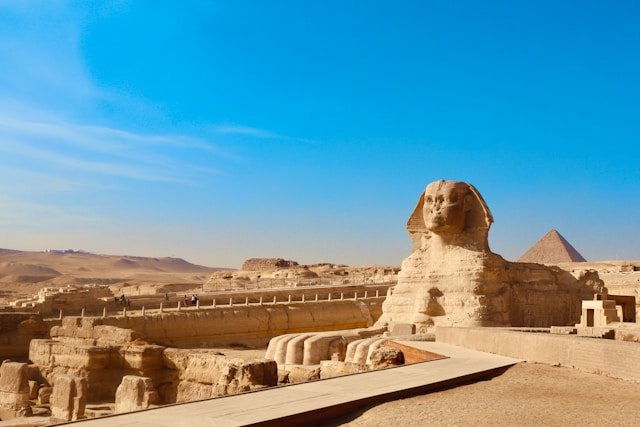
Sphinx
Crouching beside the Giza Pyramids, the Great Sphinx—a lion-bodied, human-faced guardian carved around 2,500 BCE—stares eastward with an enigmatic gaze, its weathered limestone paws half-buried in sand ($5, included with pyramid ticket). At 73 meters long, it’s smaller than you’d expect but no less awe-inspiring—legends whisper it protects the plateau, its nose lost to time or cannon fire.
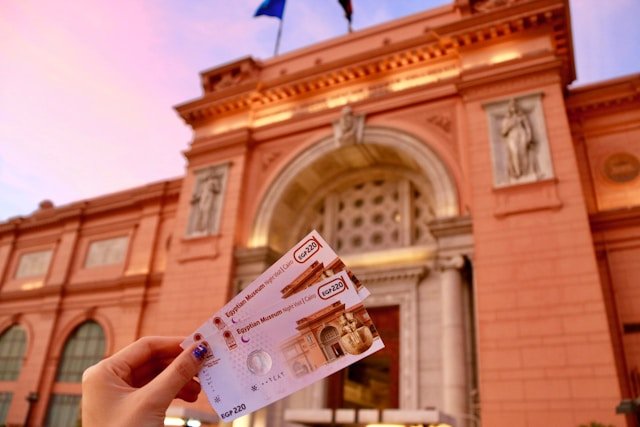
Egyptian Museum
In the heart of Tahrir Square, this century-old museum ($10 entry) crams 120,000 artifacts into a dusty, labyrinthine sprawl—Tutankhamun’s golden mask gleams in a dim room, its 11 kilograms of gold a boy-king’s legacy, while mummies lie in glass cases, their linen-wrapped faces frozen in time. Opened in 1902, it’s a treasure chest of pharaonic loot—sarcophagi, chariots, jewelry—though labels are sparse, so a $5 guidebook helps. Mornings dodge the tour-bus crush; fall (October-November) beats summer’s sticky heat, letting you linger over the Royal Mummies Room ($10 extra).
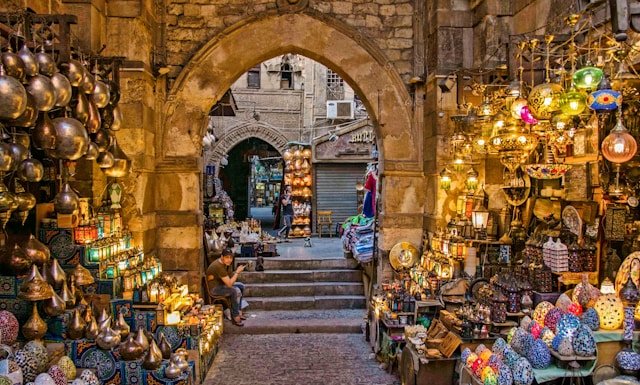
Khan el-Khalili
Tucked in Islamic Cairo, this 14th-century souk buzzes with life—narrow alleys twist past stalls hawking $1 spices, $5 brass lamps, and $2 scarves, a medieval market still thriving in the shadow of minarets. Built under the Mamluks, it’s a sensory overload—vendors shout, incense wafts, and haggling’s an art (start at 40% of the price).
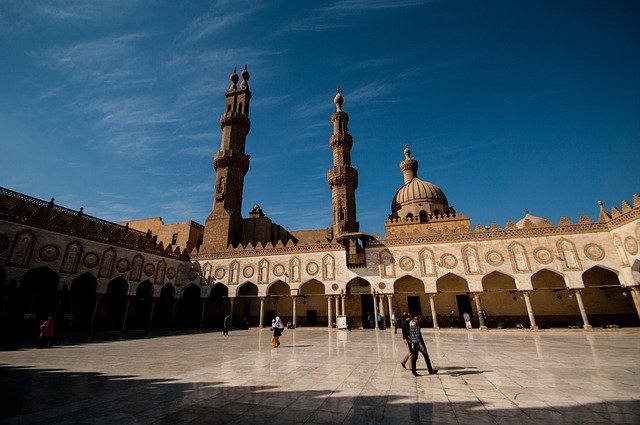
Al-Azhar Mosque
In Old Cairo’s historic core, this 970 CE Fatimid masterpiece—free entry—stuns with its white marble courtyard and five minarets, a beacon of Islamic learning tied to Al-Azhar University, one of the world’s oldest. Its arches glow under sunlight, prayer rugs hum with worshippers; spring’s breeze beats summer’s dust storms, making it a serene stop. Built by Jawhar al-Siqilli, it’s a living relic—scholars debate theology as tourists snap photos. A $1 falafel from a nearby stall pairs it perfectly; it’s Cairo’s spiritual cornerstone, a must for culture seekers.
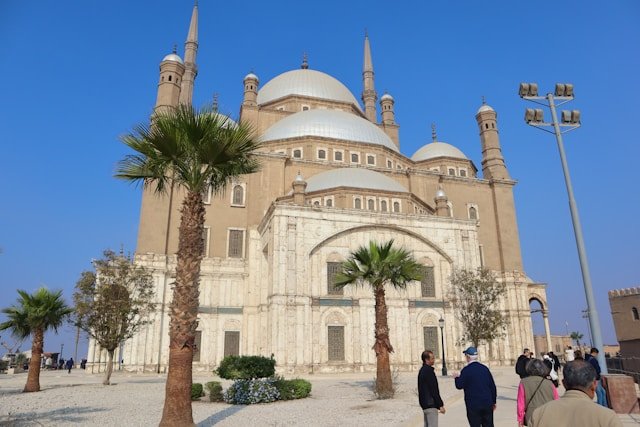
Citadel of Saladin
Crowning Mokattam Hill, this 12th-century fortress ($8 entry) looms over Cairo, its Mohammed Ali Mosque—a 19th-century alabaster wonder—stealing the show with its Ottoman dome and panoramic city views stretching to the pyramids on clear days. Founded by Saladin to fend off Crusaders, it’s a military marvel turned tourist draw; mornings offer peace before the bustle, and fall’s crisp air beats summer’s blinding glare. Wander the ramparts, peek into the Military Museum ($3 extra), and grab a $0.50 juice from a vendor—it’s Cairo’s medieval perch, a commanding must-see.
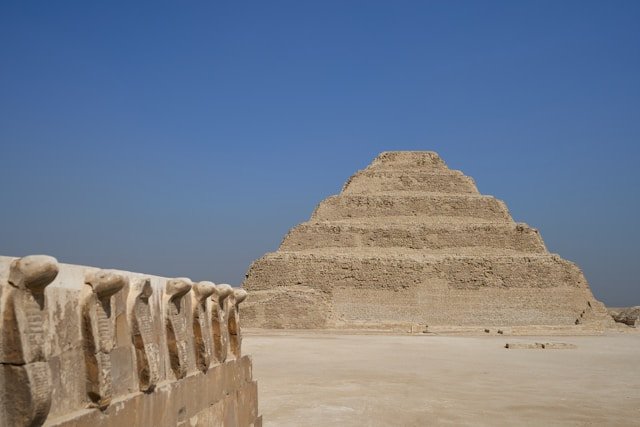
Saqqara
A 30-kilometer drive south via the Memphis road, Saqqara’s necropolis ($8 entry) stars the Step Pyramid of Djoser—2,600 BCE, Egypt’s first stone monument—its six tiers a prototype for Giza’s giants. Tombs pepper the sand, some with vivid reliefs; spring’s mild days beat summer’s scorching sun—hire a $10 taxi or join a $20 tour from downtown. Mornings dodge the midday heat; a $2 shawarma from a roadside stop refuels—it’s Cairo’s oldest burial ground, a must for pyramid chasers.
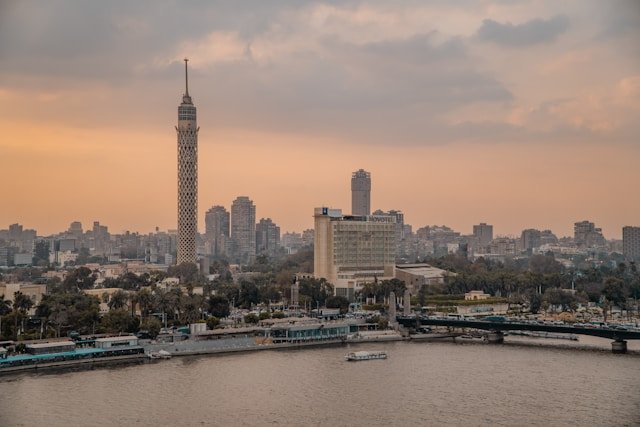
Nile Riverfront
Stretching along downtown’s Corniche, this Nile stretch hums with life—$5 felucca rides glide past palm-lined banks, while $1 tea stalls dot the walkways, offering a front-row seat to Cairo’s lifeline. Sunset turns the water golden, reflecting minarets; spring’s gentle air beats summer’s dusty haze—evenings buzz with families and couples. It’s free to stroll, though boatmen haggle—stick to $5/hour. It’s Cairo’s watery artery, a scenic must-do with a timeless pulse.
Flights
Hotels
Opened in early 2025 as the world’s largest Sofitel, this Downtown gem sits steps from Tahrir Square, blending French flair with Cairo’s pulse. Rooms are a chic retreat—think plush beds, Nile-view balconies, and marble bathrooms with deep tubs that melt away the city’s dust after a day at the Egyptian Museum (a 5-minute walk). The rooftop pool deck is a stunner, offering panoramic skyline views where you can sip $3 hibiscus tea as minarets light up at dusk. Dining’s a treat—Le Bistro fires up Egyptian-French fusion like duck with molokhia, while the lobby patisserie tempts with fresh baklava.
In Giza, The Guard Hotel sits practically on the pyramids’ doorstep, offering rooms that feel like retreats—think earthy tones, king beds with crisp sheets, and windows framing the Sphinx if you snag the right view. Its rooftop is pure magic, serving $5 taameya platters as the Great Pyramid lights up at dusk—few spots beat that vibe after a day wandering the plateau (a 5-minute walk). The breakfast spread leans local—foul, fiteer, and honey-drizzled pastries—eaten with Giza’s ancient sprawl as your backdrop, a morning ritual that hooks you. Staff excel, sorting $15 camel treks or $2 shawarma runs with a grin, and the small spa’s $20 massages melt away Cairo’s dust
Essential Tips for Visiting Cairo
Mastering a few Arabic phrases—“sala” (hello), “shukran” (thank you), or “la” (no)—can soften Cairo’s rough edges; locals light up at the effort, even if your accent’s off, and it’s a lifeline in markets where English fades. Tourist hubs like hotels and Giza lean on English, but a translation app like Google (download offline mode) cracks menus or haggles—$1 shawarma chats get easier. Keep a hotel card with its Arabic address handy; taxi drivers rely on it over shaky English. It’s a small step that turns Cairo’s chaos into connection, smoothing your plunge into its vibrant mess.
Egyptian pounds (EGP) fuel Cairo—$1 equals about 30 EGP, and ATMs at CAI or banks like Banque Misr spit out cash for foreign cards, though small bills (5-20 EGP) are gold for street eats or tips; big notes (200 EGP) stump vendors. Cards work at hotels and upscale spots, but souks and stalls demand cash—haggle hard at Khan el-Khalili, starting at 40% of quotes and walking away to seal the deal. Pickpockets prowl Tahrir or markets, so stash cash in a neck pouch or split it across pockets—it’s a budget-friendly city if you play it sharp.
Respecting Local Norms
Cairo’s vibe is laid-back yet conservative—cover shoulders and knees at mosques (scarves for women help), and tip 5-10 EGP at cafes or for guides if they shine, though it’s not expected. Public affection’s a no-go beyond hand-holding; Ramadan (shifts yearly) shuts daytime eateries—stock snacks or eat indoors. Queues dissolve into polite nudges—go with it—and avoid political digs, as history’s touchy. Watch locals at Al-Azhar or souks; their moves clue you into Cairo’s unwritten rules, keeping you respectful and welcomed.
Cairo Transportation Guide
Finding the Best Time to Visit
Fall blankets Cairo in 70-85°F (21-29°C)—perfect for pyramid treks or Khan strolls, with clear skies and low dust making Giza’s stones gleam and the Nile’s waters sparkle. Crowds thin after summer’s exodus, hotels ease 10-20%—$30-50 rooms pop; mornings dodge midday warmth, letting you linger at Saqqara or the Citadel without melting. It’s peak season’s calmer cousin, a sweet spot for soaking in Cairo’s ancient sprawl with comfort and fewer elbows—a golden window for explorers.
Winter drops Cairo to 55-70°F (13-21°C)—crisp air sharpens pyramid views, and Saqqara’s sands feel serene; it’s peak tourist time, so Giza buzzes and hotel rates nudge up 20-30%, hitting $50-80. Dust storms fade, though mornings can chill—layer up; Nile feluccas glide smooth, and Khan’s bustle feels festive. Christmas and New Year spike bookings—plan 2-3 months out. It’s Cairo’s busiest, coziest stretch, ideal for those craving its history with a cool edge.
Spring’s Warm Breeze (March to April)
Spring lifts Cairo to 65-80°F (18-27°C)—warm days brighten the Citadel’s vistas, feluccas bob on a breezy Nile; crowds taper off post-winter, keeping hotels steady at $30-60. Sandstorms (khamsin) can whip up, dusting everything—pack a scarf; mornings stay clear, perfect for Coptic Cairo’s quiet lanes. It’s a balanced season—less hectic, with spring’s gentle kick waking the city before summer’s scorch, a solid pick for a laid-back visit.
Summer’s Scorching Quiet (May to September)
Summer sears Cairo at 85-100°F (29-38°C)—pyramids bake, streets thin out; indoor spots like the Egyptian Museum or Khan’s shaded stalls rule, and hotel rates crash 20-30%, dipping to $25-50. Heat’s relentless—$0.50 juices are lifelines; dust storms peak in May, but June-August calm down. Tourists vanish, leaving Giza’s chaos to locals—it’s a budget steal for heat-tolerant souls craving Cairo’s raw vibe with elbow room.
